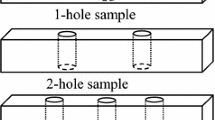Abstract
In the development and design of machinery products, product performance and tolerance stack-up analysis are generally calculated using computer software. In these calculations, the product shape is modeled as a set of primitives, which are simple geometrical shapes, such as plane, cylinder and sphere. However, the shape of an actual product is different from these shapes because machining error cannot be avoided. Actual shapes usually exhibit deviations in scales, such as geometric deviations, waviness and surface roughness. Therefore, the error between the result of computer calculation and the actual behavior of the product is caused by the shape simplification. A method of for generation of a pseudo shape is required to reduce the calculation error. In this study, a new method for random generation of skin model shapes, which maintain the surface characteristics in multiscale levels, is proposed. In the method, first, an optimal mother wavelet should be decided because they depend on extracting the surface characteristics. In this paper, eight representative mother wavelets are used in wavelet transformation for comparison. The results are discussed based on the results obtained through a case study, and latent problems are also observed.








Similar content being viewed by others
Explore related subjects
Discover the latest articles, news and stories from top researchers in related subjects.References
Garaizar RO, Qiao L, Anwer N, Mathieu L (2016) Integration of thermal effects into tolerancing using skin model shapes. In; Procedia CIRP43/14th CIRP conference on computer aided tolerancing, Gothenburg, Sweden, May 18–20, 2016, Elsevier, pp. 196–201
Armillotta A (2016) Tolerance analysis considering form errors in planar datum features. In: Procedia CIRP43/14th CIRP conference on computer aided tolerancing, Gothenburg, Sweden, May 18–20, 2016, Elsevier, pp. 64–69
Schliech B, Anwer N, Mathieu L, Wartzack S (2016) Status and prospects of skin model shapes for geometric variations management. In: Procedia CIRP43/14th CIRP conference on computer aided tolerancing, Gothenburg, Sweden, May 18–20, 2016, Elsevier, pp. 154–159
Aschenbrenner A, Wartzack S (2016) SA concept for the consideration of dimensional and geometrical deviations in the evaluation of the internal clearance of roller bearings. In: Procedia CIRP43/14th CIRP conference on computer aided tolerancing, Gothenburg, Sweden, May 18–20, 2016, Elsevier, pp. 256–261
Qiao L, Wu J, Zhu Z, Cui Y (2016) Approach to the deviation representation of non-ideal cylindrical surfaces based on the curvilinear coordinate system. In: Procedia CIRP43/14th CIRP conference on computer aided tolerancing, Gothenburg, Sweden, May 18–20, 2016, Elsevier, pp. 17–22
Homri L, Goka E, Levasseur G, Dantan JY (2017) Tolerance analysis -Form defects modeling and simulation by modal decomposition and optimization. Int J Adv Manufac Technol 92(1–4):789–802
Acknowledgements
This work was supported by JSPS KAKENHI Grant Number JP 17K18029.
Author information
Authors and Affiliations
Corresponding author
About this article
Cite this article
Otsuka, A., Muramatsu, K., Sugi, M. et al. Characteristic extraction of machined surface using wavelet transformation. Artif Life Robotics 23, 316–320 (2018). https://doi.org/10.1007/s10015-018-0443-0
Received:
Accepted:
Published:
Issue Date:
DOI: https://doi.org/10.1007/s10015-018-0443-0




